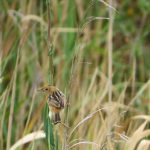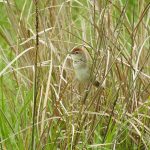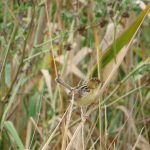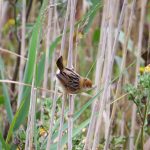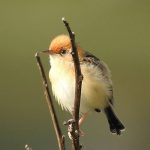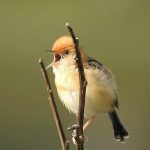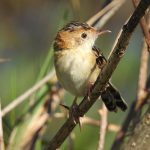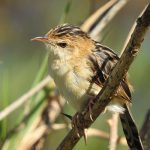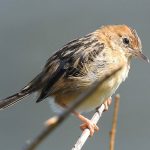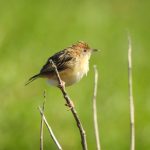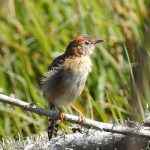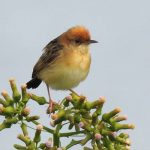GOLDEN-HEADED CISTICOLA
The Golden-headed Cisticola is a small bird, measuring around 10 to 12 cm in length. It has a slender body with a long, thin tail. The upperparts are mostly olive-brown, while the underparts are pale with a yellowish tinge. The head of the male is adorned with a distinctive golden-yellow crown, which gives the bird its name. Females have a similar appearance but with a slightly duller crown coloration.
It is native to Australia and can be found in various parts of the country, including the northern and eastern regions. Its range extends from northern Western Australia and the Northern Territory to Queensland and parts of New South Wales. It primarily inhabits grasslands, wetlands, and marshes with tall grasses and reeds.
This species is known for its energetic and acrobatic behavior. It often perches on tall grass stems, from where it sings its distinctive song and performs its aerial display flights. The song is a series of musical, high-pitched notes delivered in a fast and repetitive manner. Males are particularly vocal during the breeding season.
The diet of the Golden-headed Cisticola consists mainly of insects, including grasshoppers, crickets, beetles, and spiders. They forage in the grasses and reeds, hopping and flitting between stems to catch their prey.
Breeding generally occurs during the wet season. The female constructs a nest, which is a ball-shaped structure made of grass, reed leaves, and other plant materials. The nest is usually positioned near the ground, hidden within dense vegetation. Both parents are involved in caring for the eggs and raising the chicks.

